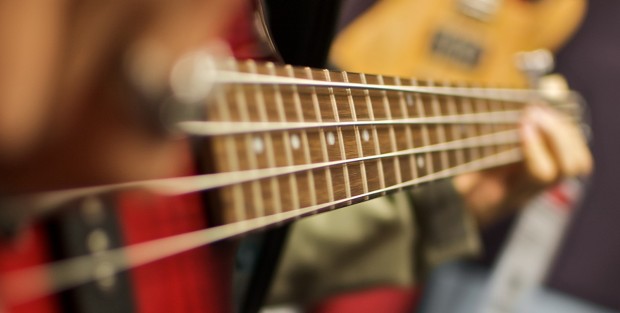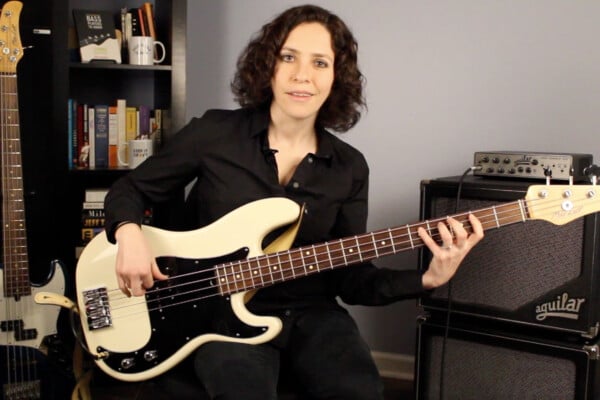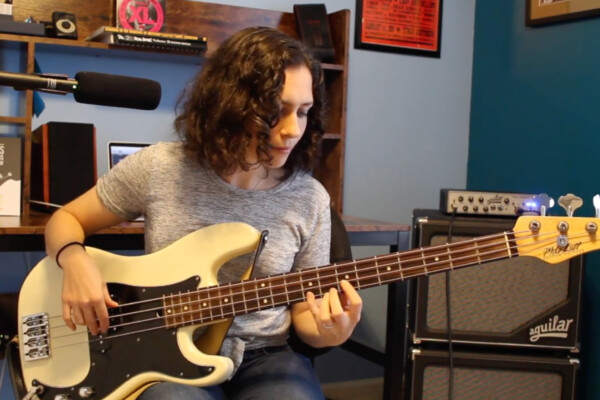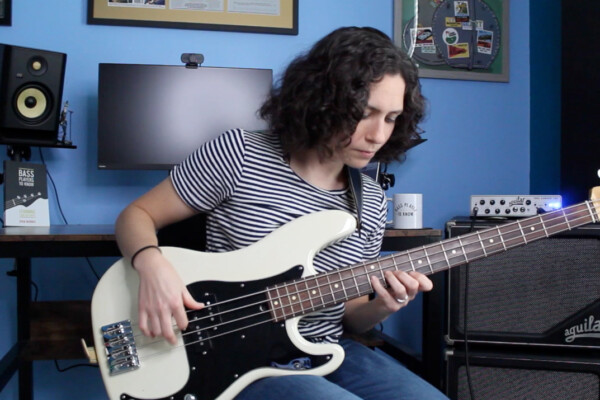Thinking In Modes or Scales and Constructing Bass Lines

Q: I’ve been trying to learn how to play over the changes, but I’m super confused about one particular aspect: I don’t know I should think of scales. For example when I’m playing over a G dominant chord, should I think G mixolydian or should I think fifth mode of the C major scale? In other words, should I treat modes as single scales? I mean, should I practice them separately for example in broken thirds, fourths groups of three notes etc.?
A: The answer is yes to all of the above.
And no…
How you choose to think of them is fairly insignificant as long as it leads to good musical choices and helps you to better visualize a tonality across the fretboard.
I learned each scale as a separate entity. While I remained aware of the relationship of “X” to the other modes, I first focused on just internalizing that one scale (by doing exactly what you mentioned… scalar patterns, arpeggios, and so on). I did that for every mode.
Then I started exploring the relationships between them all and practicing navigating through all of them in the bigger picture of tonality.
Think of it like this: each mode of the major scale (and this applies to every mode built from any scale or tonal center) is really just a way of perceiving that tonality from a different perspective but it is still just that tonality.
If you are playing over a G7 chord, you should very much play from a place of Mixolydian and – personally – I see that as the tonality for that chord as opposed to seeing it as C major). Your perspective can shift however, depending on whether you are playing bass or soloing. For example, if you are soloing, you very much could play as if you were playing E Phrygian, D Dorian, etc.) But, ultimately, strive to just see all of the modes and their relationships at once and play from a larger sense of tonality.
I don’t like thinking of scales when I’m actually making music. To me, all of the modes are just devices to help internalize the relationships between all of the notes inherent to any tonality, from any place on the fretboard and from any note.
This is a shift in perspective that helps prevent you from sounding as if they are just playing a scale vs. playing a melodic phrase built from a given tonality.
Also, try not to think modally when playing through changes but rather build each scale off of what each chord symbol is telling you. Each chord symbol is telling you exactly what notes you will presumably play. The exploration of more fully understanding this is what people are talking about when they say “chord scale”. You build the scale off of what the chord symbol is telling you directly. There are multiple options for any given chord type, each with a different sound and I may also base my choice on what others are playing around me.
Really, what you are striving for is to understand tonality, harmony and how it relates to your fretboard. Practicing scales and modes will help you to see relationships, but it won’t help much beyond that. To actually make music, you have to explore rhythm, harmonic tension and release, phrasing, etc. All the wrong notes can sound cool if used with intention and resolution. Tonality is a general guide (especially in jazz and other creative forms of music that are designed to be interpreted. In most pop music, this stuff is pretty unnecessary for a bassist, in practical terms).
When you are playing bass, you are very much operating from the root (which is why you wouldn’t think C Major over a G7 chord), and also primarily utilizing the chord tones to anchor your lines. The other scale tones are more a way to fill in the blanks and add interesting flow, directionality and cohesion to your statement of the harmony, as does the usage of chromatic notes outside of the chord scale.
Ultimately you have all 12 notes available to you and each scale is giving you the safest and most consonant sounding route through those changes. The more comfortable you are with your scales and modes, the easier it will likely be to “see” the different routes you can take through changes and the better you will see the similarities and differences between one chord and the next (which notes overlap and which ones need to shift by a half step to reflect the next chord type).
This may all sound a little heady (and it is) but it’s the scholastic method for getting tonal relationships under your fingers. You should learn the modes and explore them in every way possible to get them under your fingers and then try and let your subconscious take control of them and use your ears to hear melody. The more you play and try to use the information, the clearer it will become to you. You’ll discover the way to view the functionality of modes in the way that works best for you musically.
I’ve written quite a bit about scales, chords and modes here. Check out some of these columns as well:
- Exploring New Ways to Practice Chord Changes on Bass
- Learning Modes and Scales: A Study Guide for Bassists
- Chord Construction: A Guide for Bassists
Have a question for Damian Erskine? Send it to [email protected]. Check out Damian’s instructional books, Right Hand Drive and The Improviser’s Path.



